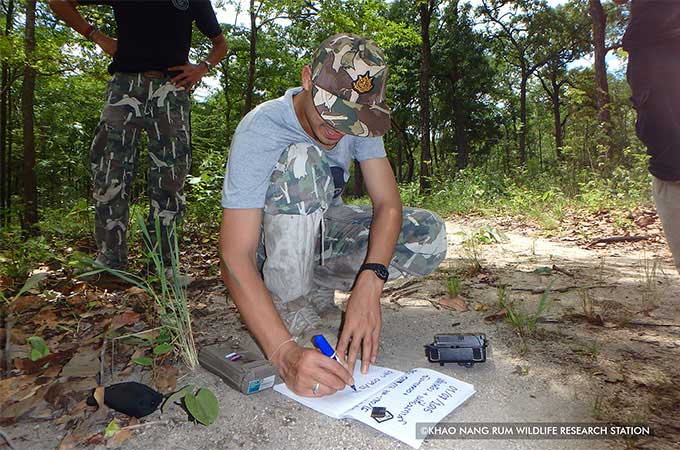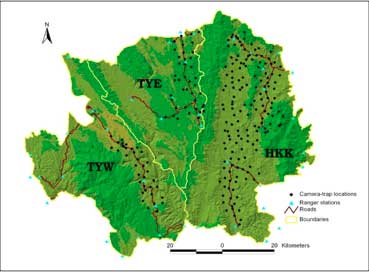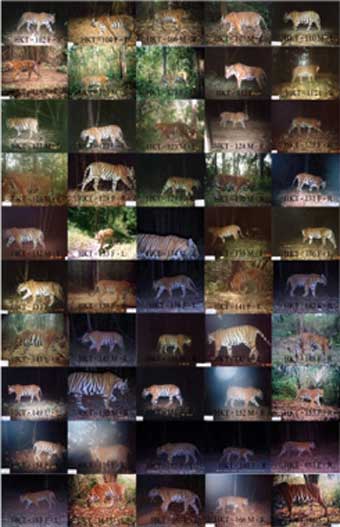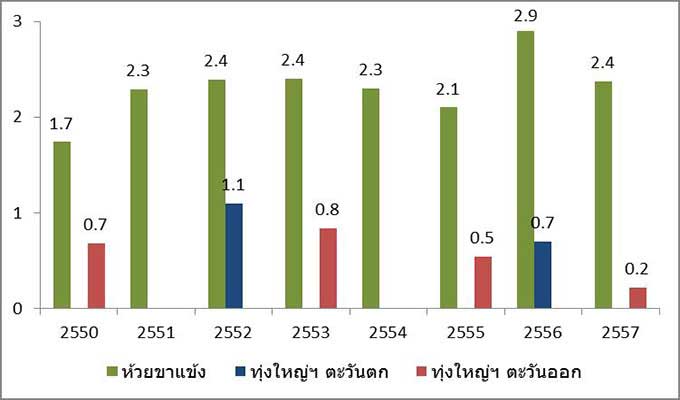Western Forest Complex (WEFCOM) is considered as the largest remaining forest track in the mainland Southeast Asia and is a main habitat for focal species, especially, tiger in Thailand. Huai Kha Khaeng (HKK), Thungyai Naresuan East (TYE) and West (TYW) Wildlife Sanctuaries are located in core area and contain the highest number of tiger in WEFCOM. Therefore, study on tiger distribution and density will show potential capacity of the area for tiger population recovery and will help improving spatial management plan. Wildlife Conservation Society (WCS) Thailand program in collaboration with Khao Nang Rum Wildlife Research Station (KNR) (Department of National Parks, Wildlife and Plant Conservation; DNP) aim to determine long-term monitoring of tiger population in HKK and TY. By doing so camera trapping was used in this research. The idea has been developed to set up camera traps systematically throughout HKK annually.

To determine tiger population by using camera trapping method with Capture-recapture analysis process under the principles stated by Karanth and Nichole (2002) which camera traps were set up along trails throughout study area with 3-4 km apart. Besides, tiger tracks and signs (e.g. spray, scats, scrapes) will be considered as a location to set up camera traps along trails. Each location, one pair of camera traps is attached on the trees with its height is about 45 cm above ground and 3-5 m far from trail. Every 15 days will collect camera traps back and animal species, sex, age, location, date and time of photographed animals will be recorded.
Overall Result
During 2004-2014, tiger population monitoring has been executed by setting up camera traps systematically throughout HKK-TY where accessibility is possible. Setting up camera traps in HKK annually whereas in TY alternate year.
The camera trap locations in HKK and TY represented in black dot.

Results from 2004-2014 show that total number of photographed tigers is 123 individuals which 96, 13 and 14 tigers founded in HKK, TYW and TYE, respectively.
The example photographs of tiger in HKK-TY

Number of tiger was taken from camera traps in HKK, TYW and TYE during 2007 - 2014

In addition, tiger population was estimated by CAPTURE-RECAPTURE using number of photographed tiger found the difference in tiger dynamic among WEFCOM core areas.
Tiger density (individual/100 km2) in HKK, TYW and TYE during 2007 - 2014

If assumed that whole WEFCOM has the same environment like core areas, the estimated number of adult tiger would be approximately 100 individuals. However, trend or distinct dynamic of tiger can be identify due to a study in HKK is more continued than TY. Moreover, tiger populations are now still changing in a better way as more number of new tiger was photographed each year.
http://onlinelibrary.wiley.com/doi/10.1111/cobi.12655/abstract